Jerry Quihampton reached out to me through the website for a hand with simplifying the wiring on his 1974 Commando.
I have based everything on the standard wiring harness, but stripped out absolutely everything that isn’t needed.
Gone is the Interpol wiring, the extra wires for the starter button, and the Power Socket.
Jerry does not have turn signals on his bike, so a lot of wiring can be removed for those (including the flasher unit of course). He has also got rid of the front brake light switch too.
Jerry has an electronic ignition (meaning the ballast resistor and condensers can go)
Finally, on the charging side, Jerry has replaced the blue can capacitor, zener diode and regulator with a combined MOSFET reg/rec.
I don’t think you could get much more streamlined wiring than this one!
Electronic Ignition

A really popular Norton Commando upgrade is to move from the old points-based ignition system over to Electronic Ignition.
One of the most common units of the time is Boyer Bransden, who have been around since 1969.
They are still going today, and their website can be found here.
Moving from points to Boyer electronic ignition is a pretty simple upgrade.
From a wiring perspective, the most important thing to note is that you will be moving from a pair of coils that are wired in parallel to series.
Originally, the points make and break the positive (earth) side of each coil in turn.
The Boyer electronic ignition system uses a concept called “wasted spark” – with the two coils wired in series, they are energized together on every rotation of the camshaft.
You’ll note in the wiring diagrams below that the Ballast Resistor and Condensers have been removed as part of the conversion to Electronic Ignition.
The color coding of the wiring is simple:
| Wire Colour | Description |
|---|---|
| Red | this is the positive feed to the Boyer, and is usually picked up from the red wire that goes to the Coil positive terminal |
| Black | this is the negative supply FROM the Boyer TO the coils |
| White | this is the negative feed to the Boyer – it joins in to the White/Blue wire that used to feed the Ballast Resistor that you are removing. As standard, this goes up to the big connector block under the tank, where it’s joined to the White/Yellow that is the kill switch on your left side handlebar switch cluster. If the white/yellow is long enough, you can connect the white wire of the Boyer directly to it! |
| Black/Yellow and Black/White | these go from the Boyer black box (they call it the Transistor Box) down to the Stator Plate that sits behind the points cover. |
- a very low operating voltage – as low as 8 volts means your bike will still run with a less than optimal battery and charging system
- circuitry performs the electronic equivalent of advance and retard to make the bike easier to start and stop the possibility of kick-back. This makes it gentler on your knees, and kinder to electric start systems.
Regulator/Rectifier

Another of the most common upgrades or modifications for a classic british bike is to add a combined regulator/rectifier unit.
Our Commandos use a zener diode (which can be found mounted on the back of the z-plate) and rectifier unit.
A combined regulator/rectifier replaces all of these components with one package.
Peter has gone for the relatively new to market Tri-Spark MOSFET unit.
It is certainly easy to spot in it’s blue anodised heatsink!
There are five wires to connect:
| Wire Colour | Description |
|---|---|
| Yellow (x 3) | these are the AC input and pick up on the three wires coming out of the three phase alternator stator (connection can be any way round, as this is the AC side of the circuit) |
| Red | this is the Positive output and will join to one of the red wires in the harness |
| Black | this is the Negative output (known as the hot wire) – it will be wired to the NU (brown/blue) that goes back to the battery negative terminal via a fuse |
The spec on paper is very good, being able to handle up to 20 amps.
And the benefit of MOSFET is much more precise control of the charge voltage. I have done a deep dive into reg/rec types and behaviour which you can find here
Here are the wiring instructions for the Tri-Spark VR-0030 MOSFET regulator/rectifier.
The Tri-Spark MOSFET reg/rec is available at many stockists including from our good friends over at Andover Norton who are carrying decent stock levels of this unit in their inventory!
Their part number is 13.1801 and you can find it here:
Alternator Stator
Jerry has fitted an RM24 3 phase Lucas alternator – this is a nice choice for superior charging in modern traffic conditions.
Charge Warning Light
Tri-Spark (along with Boyer Bransden with their Power Box) is one of the manufacturers that has detailed that the factory warning light assimilator is NOT supported with their reg/rec unit.
I can certainly recommend the Improving Classic Motorcycles charge warning light as a brilliant alternative.
I use them myself, and have gone ahead and included it in Jerry’s wiring diagram.
The nice thing about the Improving Classic Motorcycles unit is that you can retain the original warning light – so it looks totally factory (this for me is an important factory with the MK3 with it’s quirky little instrument panel.
It gives you a lot more useful information about the state of the battery and charging system compared to the standard assimilator unit, which looks for AC output from the alternator stator only.
Wiring Diagram
Here is the Custom Wiring Diagram for Jerry’s Commando.
Custom Norton Commando Wiring Diagram – Jerry Quihampton PNG 3066×1841
This is available as a PDF too – it can be downloaded here.
But wait… there’s more!
Jerry has mentioned that he wants to upgrade his electronic ignition at some point in the future to a Tri-Spark unit together with a dual output single coil.
Electronic Ignition Upgrade

Jerry will be upgrading his Boyer ignition to a Tri-Spark electronic ignition.
They have been around since about 2009 and you can find the Tri-Spark website here.
Tri-Spark get a bad press for reasons I have gone into in an article here – personally I have never, ever had an issue with them – always reliable, great customer service, and full of some great features.
They are my personal preference for electronic ignitions, and I recommend them to anyone thinking of moving based on my own great experience.
The Tri-Spark unit is a one box solution – all the gubbins are mounted inside the points cover – no additional black box to try and hide under the tank, and very, very simple to connect up.
The wiring is as follows:
| Wire Colour | Description |
|---|---|
| Red | this is the positive feed to the Tri-Spark unit. Most people attach this wire to one of the two fixing posts inside the points cover. I would personally recommend running an additional wire up to the coils, I always draw my wiring diagrams in this way to cover this recommendation |
| Black/Yellow | this is the negative feed to the Tri-Spark unit. This joins in to the White/Blue wire that used to feed the Ballast Resistor that you are removing. As standard, this goes up to the big connector block under the tank, where it’s joined to the White/Yellow that is the kill switch on your left side handlebar switch cluster |
| Black | this is the negative supply FROM the Tri-Spark TO the coils |
Two major benefits of the Tri-Spark:
- a very low operating voltage – as low as 8 volts means your bike will still run with a less than optimal battery and charging system
- circuitry performs the electronic equivalent of advance and retard to make the bike easier to start and stop the possibility of kick-back. This makes it gentler on your knees, and kinder to electric start systems.
Just like the Boyer that Jerry is removing, the Tri-Spark electronic ignition system uses a concept called “wasted spark” – with the two coils wired in series, they are energized together on every rotation of the camshaft.
However, Jerry is pairing his Tri-Spark ignition with a dual output single tower coil – so there is no worry with moving the pair of single 6-volt coils to a series setup for wasted spark ignition as with a normal points conversion.
One point worthy of note with dual output single tower coil conversions is sparkplug choice.
Most people don’t realise that with this type of coil, the sparks at the sparkplugs jump the opposite way on one lead.
So for one sparkplug, the spark jumps from the centre electrode to the ground electrode (as you’d normally expect)
However, for the other sparkplug, the spark jumps from the ground electrode to the centre electrode (which is opposite to what you’d think)
Therefore, when choosing your sparkplugs, you need to bear this factor in mind!
Many people go for precious metal plugs – like platinum or iridium.
The benefit of these plugs is longevity – they simply last longer.
With the spark jumping from the ground electrode to the centre electrode, this benefit is totally lost.
The answer is to run double platinum or similar plugs, where a precious metal is used at BOTH the centre electrode AND the ground electrode.
My personal preference is the Denso VW22 plug – this has a platinum pad on the ground electrode and an iridium centre electrode.
I like Densos as they just seem to last forever – I use the IW22 on twin coil bikes, and their VW22 is the ‘twin precious metal’ equivalent.
Wiring Diagram with upgraded ignition
Here is the Custom Wiring Diagram for Jerry’s Commando with the Tri-Spark upgrade.
Custom Norton Commando Wiring Diagram – Jerry Quihampton (upgraded ignition) PNG 3066×1841
This is available as a PDF too – it can be downloaded here.
Categories: Custom Wiring Diagrams

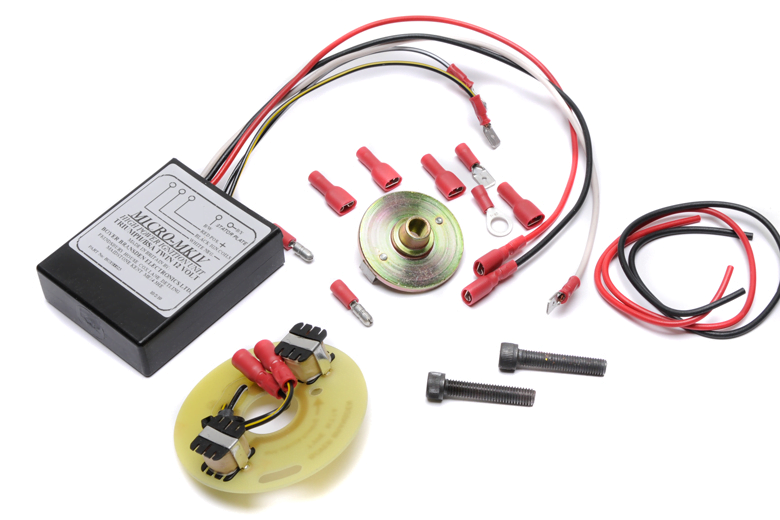
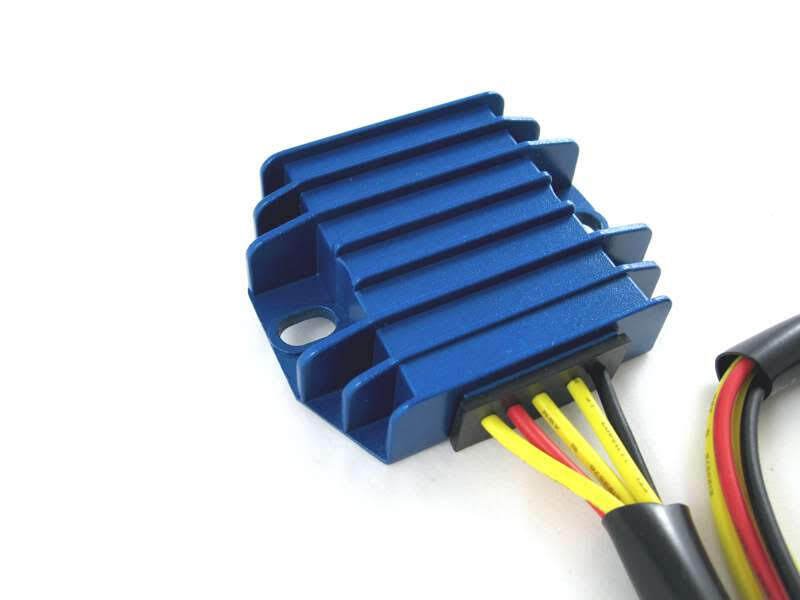

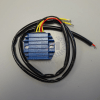


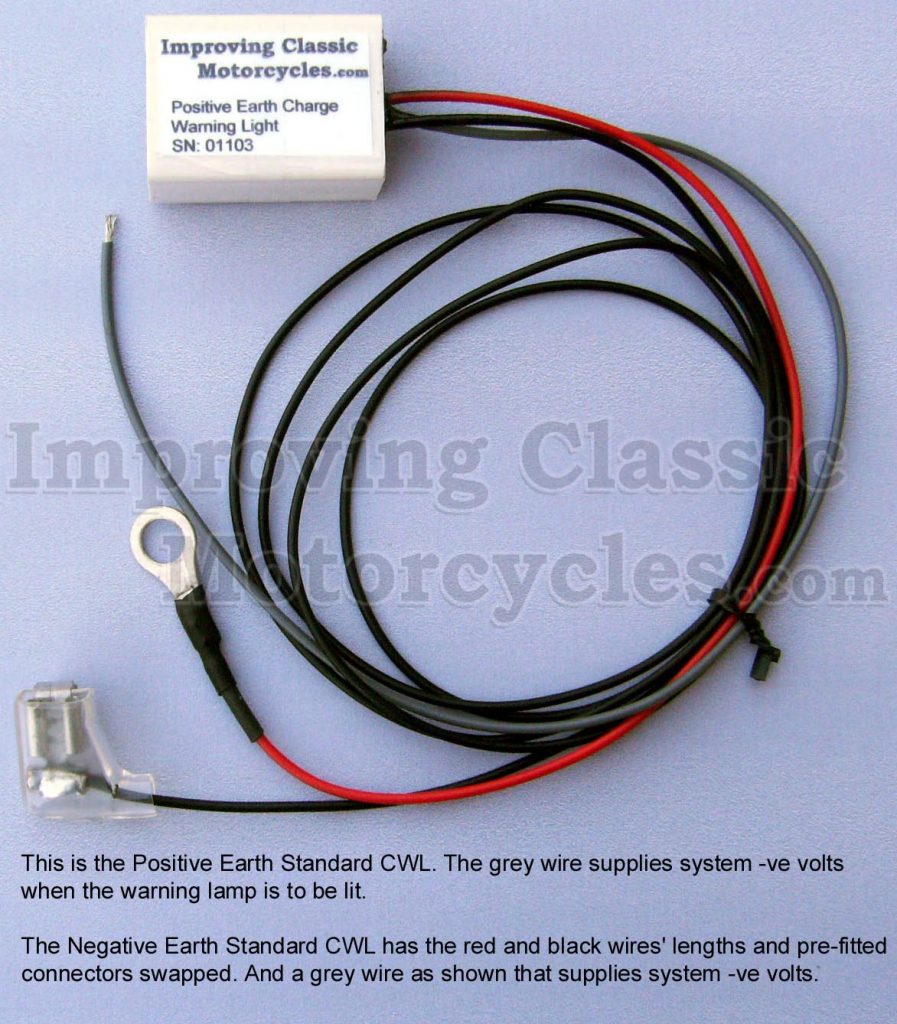
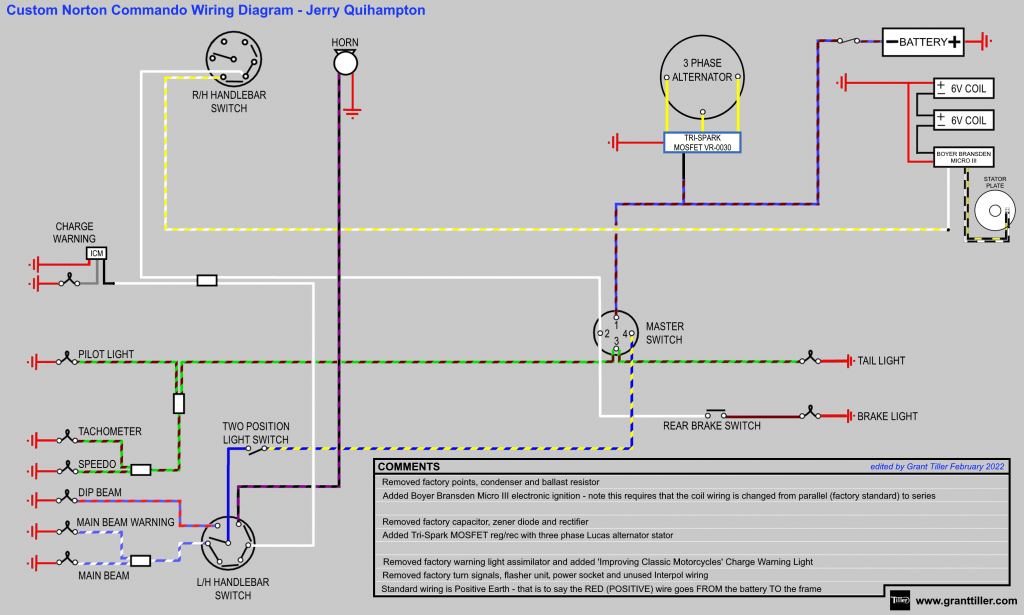
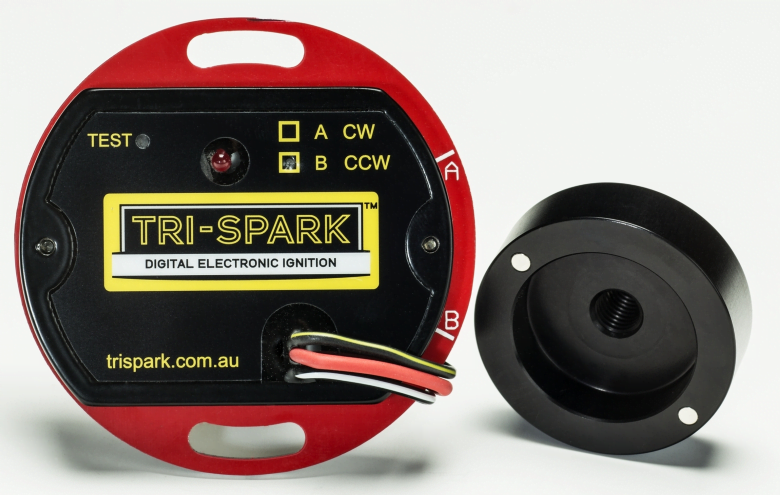

Thanks so much for my diagrams. You have made a previously un-doable job (hopefully) within my reach! Jerry.
Hi Grant
Thanks so much for your help. I reckon even I can follow your instructions!